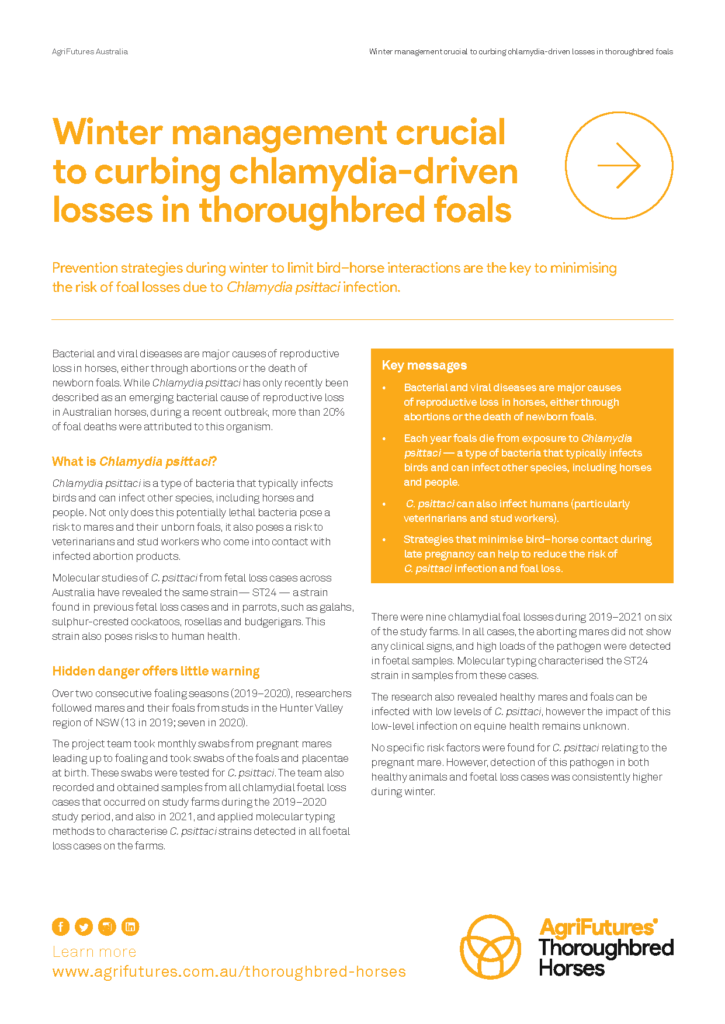Chlamydia psittaci is a bacteria that typically infects birds and can infect other species, including horses and people. Not only does this potentially lethal bacteria pose a risk to mares and their unborn foals, it also poses a risk to veterinarians and stud workers who come into contact with infected abortion products, and can cause life-threatening pneumonia. Molecular studies of C. psittaci from foetal loss cases across Australia have revealed the same strain — ST24 — found in previous foetal loss cases and in parrots, such as galahs, sulphur-crested cockatoos, rosellas and budgerigars. This strain also poses risks to human health.
Over two consecutive foaling seasons (2019–2020), researchers followed mares and their foals from studs in the Hunter Valley region of NSW (13 in 2019; seven in 2020). The project team took monthly swabs from pregnant mares leading up to foaling and took swabs of the foals and placentae at birth. These swabs were tested for C. psittaci. The team also recorded and obtained samples from all chlamydial foetal loss cases that occurred on study farms during the 2019–2020 study period, and also in 2021, and applied molecular typing methods to characterise C. psittaci strains detected in all foetal loss cases on the farms.
There were nine chlamydial foal losses during 2019–2021 on six of the study farms. In all cases, the aborting mares did not show any clinical signs, and high loads of the pathogen were detected in foetal samples. Molecular typing characterised the ST24 strain in samples from these cases. The research also revealed healthy mares and foals can be infected with low levels of C. psittaci, however the impact of this low-level infection on equine health remains unknown. No specific risk factors were found for C. psittaci relating to the pregnant mare. However, detection of this pathogen in both healthy animals and foetal loss cases was consistently higher during winter.





